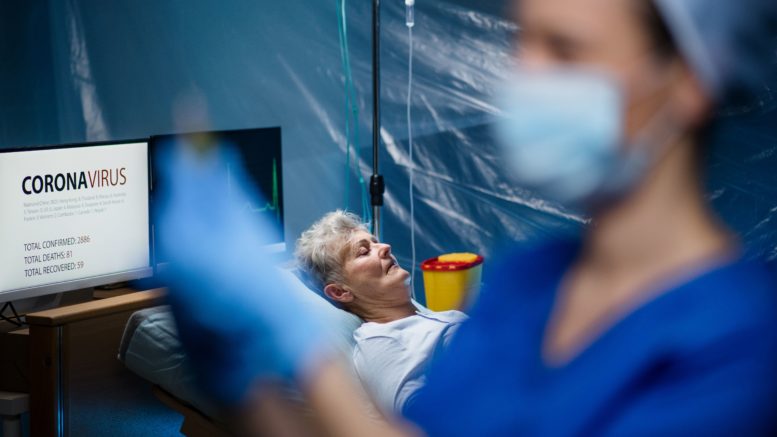Based on a detailed review of available evidence to date, the Centers for Disease Control and Prevention (CDC) has updated and expanded the list of who is at increased risk for getting severely ill from COVID-19.
Older adults and people with underlying medical conditions remain at increased risk for severe illness, but now CDC has further defined age- and condition-related risks.
As more information becomes available, it is clear that a substantial number of Americans are at increased risk of severe illness – highlighting the importance of continuing to follow preventive measures.
“Understanding who is most at risk for severe illness helps people make the best decisions for themselves, their families, and their communities,” said CDC director Robert Redfield MD. “While we are all at risk for COVID-19, we need to be aware of who is susceptible to severe complications so that we take appropriate measures to protect their health and well-being.”
CDC has removed the specific age threshold from the older adult classification. CDC now warns that among adults, risk increases steadily as you age, and it’s not just those over the age of 65 who are at increased risk for severe illness.
Recent data, including an MMWR published last week, has shown that the older people are, the higher their risk of severe illness from COVID-19. Age is an independent risk factor for severe illness, but risk in older adults is also in part related to the increased likelihood that older adults also have underlying medical conditions.
CDC also updated the list of underlying medical conditions that increase risk of severe illness after reviewing published reports, pre-print studies, and various other data sources. CDC experts then determined if there was clear, mixed, or limited evidence that the condition increased a person’s risk for severe illness, regardless of age.
There was consistent evidence (from multiple small studies or a strong association from a large study) that specific conditions increase a person’s risk of severe COVID-19 illness:
• Chronic kidney disease
• COPD (chronic obstructive pulmonary disease)
• Obesity (BMI of 30 or higher)
• Immunocompromised state (weakened immune system) from solid organ transplant
• Serious heart conditions, such as heart failure, coronary artery disease, or cardiomyopathies
• Sickle cell disease
• Type 2 diabetes
These changes increase the number of people who fall into higher risk groups. An estimated 60 percent of American adults have at least one chronic medical condition. Obesity is one of the most common underlying conditions that increases one’s risk for severe illness – with about 40 percent of U.S. adults having obesity. The more underlying medical conditions people have, the higher their risk.
CDC also clarified the list of other conditions that might increase a person’s risk of severe illness, including additions such as asthma, high blood pressure, neurologic conditions such as dementia, cerebrovascular disease such as stroke, and pregnancy. An MMWR published today further adds to the growing body of research on risk by comparing data on pregnant and nonpregnant women with laboratory-confirmed SARS-CoV-2 infection. Pregnant women were significantly more likely to be hospitalized, admitted to the intensive care unit, and receive mechanical ventilation than nonpregnant women; however, pregnant women were not at greater risk for death from COVID-19.
Every activity that involves contact with others has some degree of risk right now. Knowing if you are at increased risk for severe illness and understanding the risks associated with different activities of daily living can help you make informed decisions about which activities to resume and what level of risk you will accept. This information is especially critical as communities begin to reopen.
Everyone should continue to do their part to implement prevention strategies, such as focusing on activities where social distancing can be maintained, washing your hands frequently, limiting contact with and disinfecting commonly touched surfaces or shared items, and wearing a cloth face covering when you are around people you do not live with, especially when it is difficult to stay 6 feet apart or when people are indoors. By taking these steps, you can help protect yourself, your loved ones, and others around you, including those most vulnerable to severe illness.
Source: CDC

Be the first to comment on "CDC Updates, Expands List of People at Risk of Severe COVID-19 Illness"